USS Northampton (CLC-1)
I served aboard Northampton from 13 Jul 1958, when I reported aboard in Copenhagen, Denmark, until some time in June 1960, when I was released from active duty in Norfolk, VA. The picture you see here is a much-reduced copy of a beautiful painting by E. Rollier which was formerly available at www.aworldwide.com. The history was taken from: Dictionary of American Naval Fighting Ships, Vol. V, p. 112.
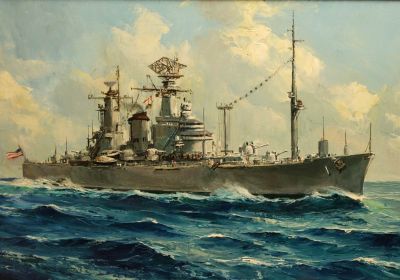
(CLC-1: dp. 12,320 (It.); l. 677' 2"; b. 70' 3"; dr. 19' 2" (mean); s. 33 k.; cpl. 1675; cl. Northampton)
The third Northampton was laid down as CA-125, 31 August 1944 by the Fore River Yard, Bethlehem Steel Corp., Quincy, Mass. Work suspended between 11 August 1945 and 1 July 1948; she was launched as CLC-1, 27 January 1951; sponsored by Mrs. Edmond J. Lampron, and commissioned as CLC-1, 7 March 1953, Capt. William D. Irvin in command.
Following shakedown, Northampton reported for duty to Commander Operational Development Forces, Atlantic Fleet. For seven months she conducted extensive tests of her new equipment. Evaluation completed in September 1954, she reverted to the operational control of Commander Battleship-Cruiser Force, Atlantic Fleet. She next demonstrated her capabilities as a tactical Command Ship by serving as flagship, first for Commander Amphibious Force, Atlantic Fleet (October-November 1954) and then for Commander 6th Fleet (December 1954-March 1955). Between 1 September and 22 October she served as flagship for Commander Strike Force, Atlantic, a position she was to hold frequently over the next fifteen years.
On 4 February 1956, Northampton emerged from her first overhaul, at the Portsmouth, Va., Naval Shipyard, and after refresher training off Cuba, participated, as a unit of the Navy's first guided missile division afloat, CruDiv 6, in the first public demonstration of the Terrier missile. In April, she steamed east for 6 months with the 6th Fleet, and, during the summer of 1957, resumed midshipmen training cruises. But, between that time and 1961, she returned only infrequently to European waters. Deployed on those occasions for NATO and Fleet exercises and People to People visits the command ship was visited by high government officials of various European countries, including King Baudouin of the Belgians and King Olav V of Norway.
Redesignated CC-1 on 15 April 1961, Northampton has remained in the western Atlantic until decommissioning in February 1970. Her cruises ranged from Canadian to Panamanian waters as she extensively tested and evaluated new communications equipment and played host to visiting national and international dignitaries, including Presidents Kennedy and Johnson.
The day after I reported aboard, a crisis in the Middle East began. (What else is new?) King Faisal II of Iraq was murdered and a military régime took control of that country. The next day, American Marines landed in Beirut, Lebanon, to protect the pro-Western government there. When Northampton got underway from Copenhagen, we faced the possibility of proceeding directly to the Mediterranean to support U. S. military operations there. That need didn't materialize and we put into our next scheduled port, Hamburg, Germany, for a few days of liberty before returning to our home port of Norfolk, Virginia.
After our return to the States, Northampton was in Norfolk Naval Shipyard at Portsmouth, Virginia, until early 1959, when we went to Guantánamo Bay, Cuba, for refresher training. While in Gtmo, we steamed to Port-au-Prince, Haiti, for a weekend of liberty.
Some of the ports the "Snortin' Nortn" visited during 1959 were Newport, New York City, Annapolis and Palma de Mallorca. The history above doesn't mention that most of Northampton's career from 1956 to 1961 was spent as flagship for Commander 2nd Fleet. This rôle dictated our itinerary and brought us some distinguished visitors from time to time.
In early 1960 we made a European cruise during which we crossed the Arctic Circle in February to participate in some NATO excercises in northern waters. We only approached land close enough to allow ComSecondFleet to visit Bodø, Norway, by helicopter. With this military mission out of the way, we switched to our public relations, or "people-to-people", mode and visited Greenock, Oslo, Stockholm and Portsmouth. We were to have visited Helsinki, but some cold war diplomatic complications caused our visit to be cancelled. It seems the Soviets would have had to provide icebreaking services for us to transit the Gulf of Finland. The result was that we spent a whole week in Stockholm, instead of only three days. As the quoted history mentions, King Olav V visited us in Oslo. King Baudoin's visit took place while he toured the U. S. naval base in Norfolk.
During my first year, I served as junior division officer of the 3rd Division, which was responsible for the 3"/70 gun mounts. My second year, I was the N Division Officer and Assistant Navigator.
From time to time, I played jazz records on Northampton's sound system. This is an article from the 15 March 1959 issue of her newsletter, The Scanner, which I may have written myself:
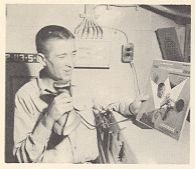
The ENS Carey Show
Northampton's own station NCYO is now swinging to the sounds of jazz every evening from 1830 to 1930. Keeping the hot and cool sounds spinning is Ensign Carey, whose last tour of duty as a disc jockey was at KNOB-FM in Long Beach, Calif., which was probably the first all-jazz radio station in the world.
The styles of jazz on this show are as varied as the moods and whims of its disc jockey. The theme of the show often goes from far-out modern sounds one night to two-beat New Orleans jazz the next night to solidly rocking big band swing the next. On a ship the size of Northampton there are quite a few partisans of each style as has been proved by the favorable audience reaction to the programs.
Also appearing in the same issue was our Captain's regular column:
NOTES FROM THE SEA CABIN
—by the Captain
Northampton is now fully shaken down again. Guantanamo and operation "Big Deal," between them, have scraped away the operational rustiness that developed during our long overhaul. We can now expect to be called on, without advance notice, for any or all of the tasks within the capabilities of a CLC.
This means, of course, that we must be and stay ready. We must keep our supply levels up, our equipment in first class operating condition, ourselves at the peak of training.
Perhaps most important, we must be mentally ready to deliver whatever is asked of us. The Cold War is in a tense phase today; the Berlin situation is visibly dangerous. Northampton, the Striking Fleet Flagship, is a key front-line unit of the most central importance to U.S. and Allied sea-power. In such taut times and aboard such a key ship, it is our duty and it should be our pride, each of us, to be on the alert, ready to function at full effectiveness on call.
Another article in this issue of The Scanner was written by my good friend, our Public Information Officer, Ensign Glenn "Whitey" Sedam, who later played a minor rôle in the Watergate scandal, and who died all too young. Later that year, I got to coach Northampton's volleyball team to the CruLant championship in a tournament in Philadelphia described in this article which was printed in the 8 June issue of The Scanner:
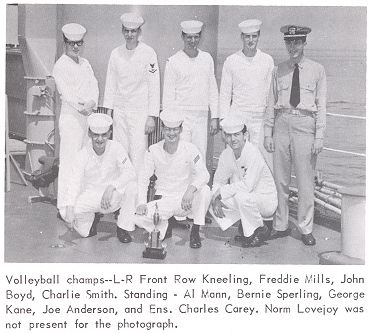
Nort'n Keeps CruLant Championship
Volleyball champions retained their title when Northampton's team snagged the final victory from USS Newport News. Nort'n's win marked the end of this year's cruiser division volleyball tournament and handed them the CruLant Championship.
In a tournament held in Philadelphia last month, Northampton's volleyball team triumphed over Galveston and Newport News to retain the championship it won last year. The team got off to a bad start against Galveston, losing its match 9-15, 7-15, and looking like anything but championship material. Then Galveston's team cooled off against Newport News and lost a hard fought two-out-of-three match. This gave Nort'n a second shot at Galveston, and they came through over the tired missilemen this time — 15-12, 15-13.
Play resumed the next night against Newport News, a team Northampton had consistently defeated in practice games before the tournament. Needing two matches to win, Northampton got ahead of the News and never relinquished their advantage, winning the first match 15-10, 15-7, and coming right back with a 15-2, 15-11 win to take the championship.
If any one player could be singled out as the outstanding player on the team, he would be Charlie Smith of Fox Division. Although one of the smaller players on the team, Smith more than made up for his size with his speed and skillful spiking and serving. Smith credits his volleyball proficiency to his many summers of playing volleyball on the beach near San Diego.
The team's line-up included Smith, Al Mann, George Kane, Joe Anderson, and John Boyd of Fox Division, Bernie Sperling and Norm Lovejoy of OI, Freddie Mills of OE, and ENS Charles Carey, who was coach, manager, and extra player.
A year later, I once again coached Northampton's volleyball team when it traveled to Boston to try to retain its CruLant championship. In 1959, I had only played a few minutes because of the high level of playing talent on our team, but by 1960 several of the previous year's players had moved on to civilian life or other duty stations and I felt compelled to play much more regularly. We lost a hard-fought tournament to, I think, USS Boston's team.
During my tour of duty aboard Northampton, our skippers were:
After I left Northampton, she was redesignated as an emergency command post ship for use by the President during national emergencies and became known as the "Grey Ghost of the Virginia Coast", spending a lot of her time underway within easy helicopter range of the White House. I saw my old ship for the last time in late 1963, when I visited her while serving in USS Annapolis' pre-commissioning detail in Norfolk.
The following photos were sent to me in 2013 by one of my Northampton shipmates, Ron McCuiston:
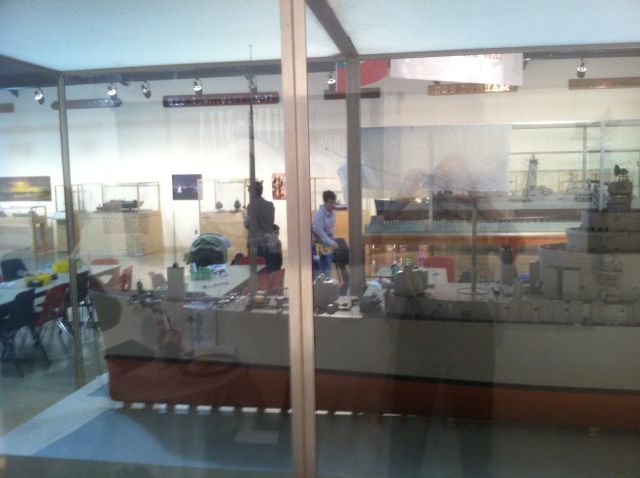
Northampton bow — a large builder's model in the Navy Yard museum, Washington, DC.
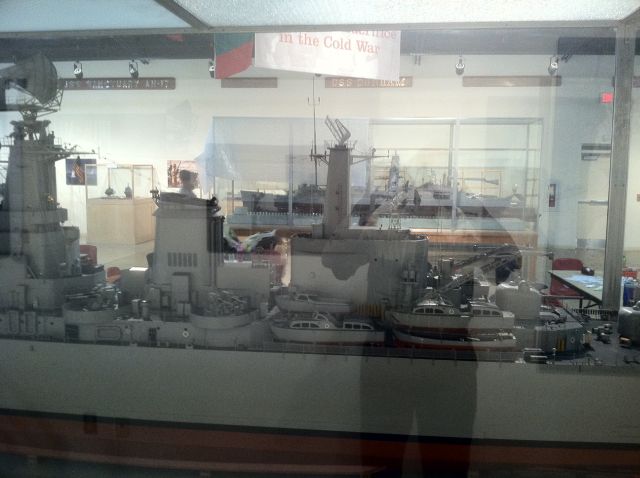
Northampton amidships, with 3"/50 mounts, instead of the 3"/70s which Ron and I knew.
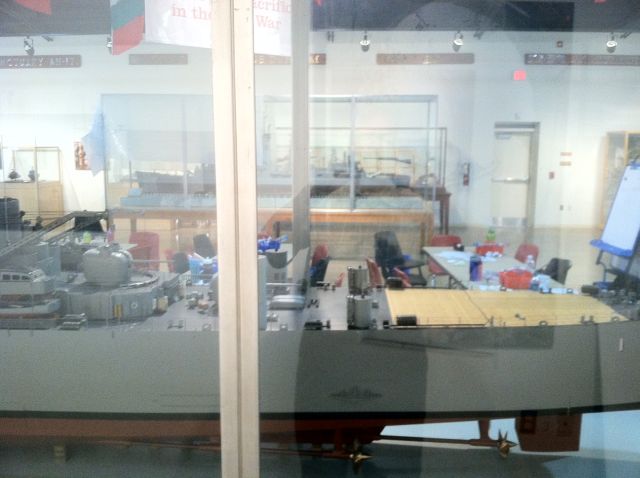
Northampton stern
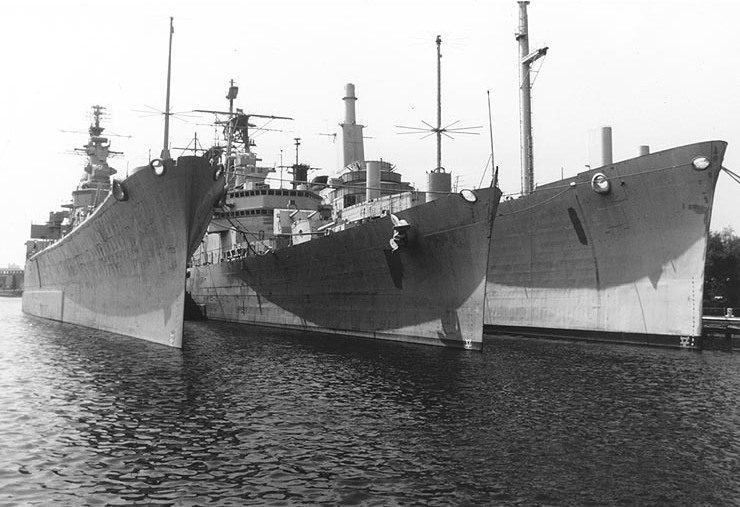
In this 1978 photo, from U. S. Navy archives, we see, from left to right,
USS Newport News (CA 148), USS Springfield (CLG 7) and USS Northampton (CC 1),
awaiting disposal in the Philadelphia Navy Yard.
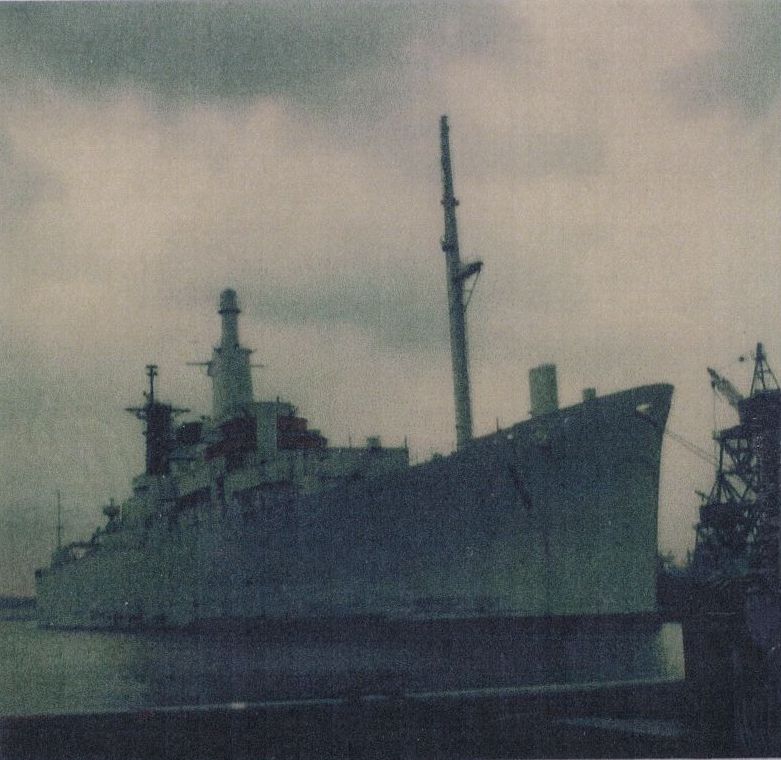
And in 1980, a photo from the NavSource archives shows Northampton being scrapped
at the Federal Shipyard on the Hackensack River, Kearny, NJ.
This page was last updated 13 Nov 2013.







